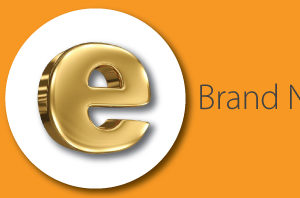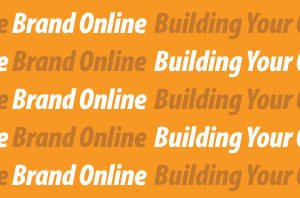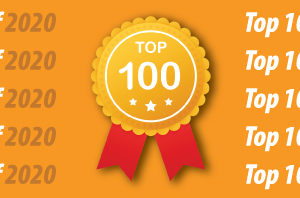
World famous entrepreneur, Richard Branson is known for his expertise in growing outstanding companies through brand loyalty & by creating company cultures that people love. He is best known for founding Virgin Group, a brand that is currently valued at over 20 billion dollars. How did he do it? When you focus on people first, the profits will follow. The following article was recently posted in Entrepreneur and gives tremendous insight on how brand loyalty has impacted Richard Branson and Virgin Group.
How do you build a company culture based on customer service?
I have been thinking about that question quite a bit this past week, partly because of a recent New York Times article about one of our airlines, Virgin America, describing what some see as a tension between making profits and creating a company that people love.
Virgin America has just turned 6 years old, and over that time we’ve put a lot of thought and effort into making flights enjoyable,  while almost all of our competitors have focused solely on their bottom line. As a result, our airline has established a loyal following in a very tough market. Matt Richtel, the reporter, pointed out that a Consumer Reports survey found that respondents ranked us first in a list of airlines; in fact, the customer satisfaction scores were some of the highest seen in years.
while almost all of our competitors have focused solely on their bottom line. As a result, our airline has established a loyal following in a very tough market. Matt Richtel, the reporter, pointed out that a Consumer Reports survey found that respondents ranked us first in a list of airlines; in fact, the customer satisfaction scores were some of the highest seen in years.
Essentially, Richtel looked at Virgin America startup finances in terms of when the company will start working for its investors. We are confident that it will. That’s because the question he was essentially asking was: Do you sometimes have to choose profit over good service?
I’m asked this often, and Virgin America is a textbook example of why I always say no. The Virgin Group has started many businesses with the goal of prioritizing people, the planet and profit equally, and they thrive despite occasional economic dips and competition from much bigger companies that were specifically built to bring in cash.
If you win people over, the profits will follow
The first step in building a customer-focused business is to ask yourself: What can we can offer customers that others aren’t, or won’t, because they are so narrowly focused on profit? If you base your new business on this premise, it will be much easier to find an edge over your competitors.
Unfortunately, this means that you will probably face a lot of opposition and second-guessing from others in the industry when you
launch your startup. Back in the 1980s, when people were wondering whether Virgin Atlantic, our other airline, would survive, some critics said that few people would fly across the Atlantic on an airline called Virgin. We responded that since we only had one 747 plane, we’d be just fine with only a small number of passengers!
As it turned out, those customers loved our airline and were very loyal, and we were soon competing with the major airlines.
Build on your employees’ ideas
The second step involves encouraging your staff to think like and empathize with customers, and then tell you about any ideas that they may have for innovations to your product or service. Find a way to empower your people to follow up on their ideas.
At the Virgin Group, we put a lot of effort into this: One example that comes to mind is that everyone at Virgin America – the CEO, the pilots, the accountants, everyone – attends an annual training program called Refresh to celebrate their achievements, build team spirit and encourage creativity. We run sessions where teammates brainstorm new ideas.
Many of the best ideas are free — it doesn’t cost much to make someone happy.
Increase profits by being nice
 In some American classrooms I recently visited, there were signs posted that read: “Work hard, be nice.” That sign should probably be hung in boardrooms too. There is no better way to improve the bottom line than to go the extra mile for your customers.
In some American classrooms I recently visited, there were signs posted that read: “Work hard, be nice.” That sign should probably be hung in boardrooms too. There is no better way to improve the bottom line than to go the extra mile for your customers.
The other day I heard about an entrepreneur who arrived at our terminal in Portland, Ore. He was frantic: He’d been preparing for his new company’s launch the night before, and then he woke up 20 minutes before the departure of his flight from Portland to San Francisco. His flight had departed, and there weren’t any other flights to San Francisco. He was alone and out of options – have you ever been in a situation like that?
Our team rallied and got him on a flight to Los Angeles with a connection to San Francisco. It would be tight because the connection departed the same time as the flight to Los Angeles arrived, but they were rooting for him. They assigned him a seat at the front of the plane and told him about the quickest route to his connection. A crew member told the pilots about the rush, and they managed to get the plane to Los Angeles seven minutes early.
When the entrepreneur reached his connecting gate on time, the pilot and crew on that flight congratulated him.
He wrote on his blog: “They had gone above and beyond that day. Each and every one of them had a hand in making my experience not only successful, but enjoyable — and the best part, I didn’t once feel as if I was inconveniencing any one of them.” Such effort and kindness can earn you a customer for life.
Once you’ve completed these steps — you’ve created an innovative, unequaled product or service, and through the kindness and helpfulness of your employees, you are winning new loyal customers every day – stop and take a look around: You just built a thriving business.
It really can be that easy. Being the brand focused around going the extra step for a customer can create lasting, loyal customers in an age where brand loyalty has plummeted due to easy access to alternative products. In short, if you for customers what you would for your mother or best friend, your customers will continue to come back.
Read the full article here.
2 Comments
Pingbacks
-
[…] got distinct brand names. And obviously, as the years go by, it’s more and more difficult to find a distinct brand name that hasn’t already been used and protected. So, it’s all that more challenging, but […]
-
[…] Related: Building Brand Loyalty […]




